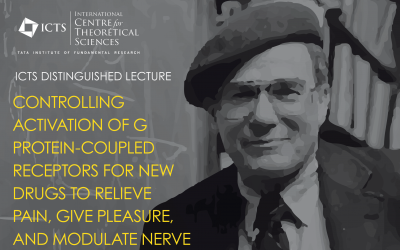G protein-coupled receptors (GPCRs) detect molecules outside the cell (say Morphine) to open the G protein (GP) bound inside the cell to release a GDP that exchanges with GTP to signal a response inside the cell (relieves pain in this case). GPCR agonists include odors, tastants, pheromones, hormones, and neurotransmitters. GPCRs are targets for 50% of drugs on the market. Global sales $180 billion. GPCRs are involved in many diseases (cardiovascular, inflammatory, cancer, mental, metabolic, endocrinological disorders, immunological, viral infections, and senses disorders. YET THE MECHANISM BY WHICH AGONIST, GPCR, AND GP LEAD TO ACTIVATION WAS NOT KNOWN. We will describe this mechanism discovered by combining new methods for structure prediction with molecular dynamics and metadynamics. We will examine how the mechanism works for various GPCRs. With these advances in understanding mechanism, we see development of new generations of drugs with maximum activity and minimized side effects.
About the Speaker: Goddard has been a pioneer in developing methods for quantum mechanics, force fields, reactive dynamics, molecular dynamics, and Complete Sampling predictions of protein-ligand systems. He has used these methods for numerous applications to catalysis, fuel cells, batteries, membrane proteins, and drug design. His goal is to optimize performance computationally so experimental validation can be restricted to the predicted best systems. He obtained his PhD in Engineering Science (minor physics) at Caltech in 1965 and then joined the chemistry faculty, where he is Charles and Mary Ferkel Professor of Chemistry, Materials Science, Applied Physics and Director of the Materials and Process Simulation Center. He was Elected to the National Academy of Science US in 1984 and has received many other honors and awards. He has published >1535 papers, with H index = 178 and I-10 index 1316 and has 27 Patents issued, 15 pending. He was Named Clarivate Highly Cited Researcher for 2018, 2019, 2020, 2021 (https://hcr.clarivate.com/).
This lecture is part of the program Statistical Biological Physics: from Single Molecule to Cell.


